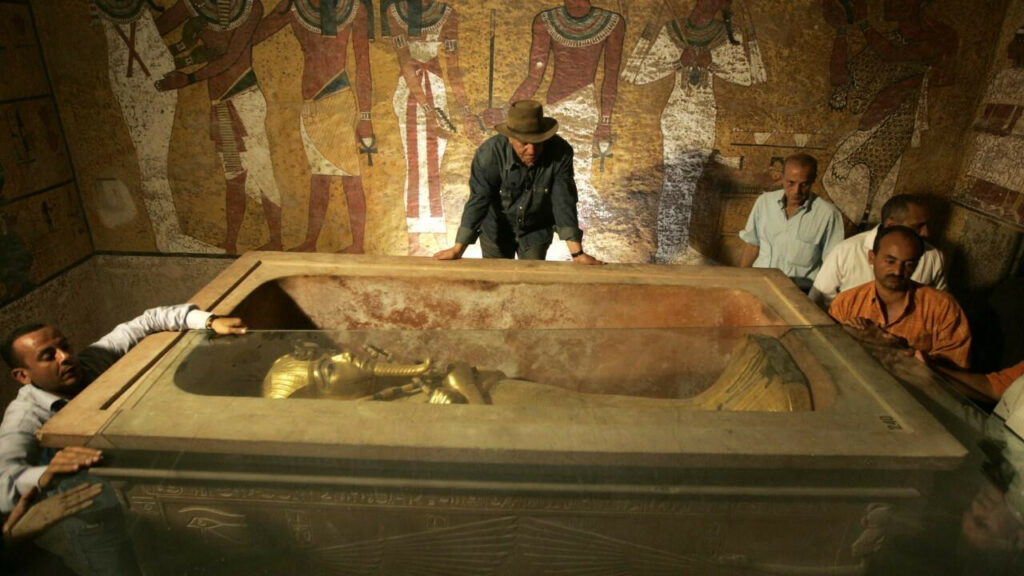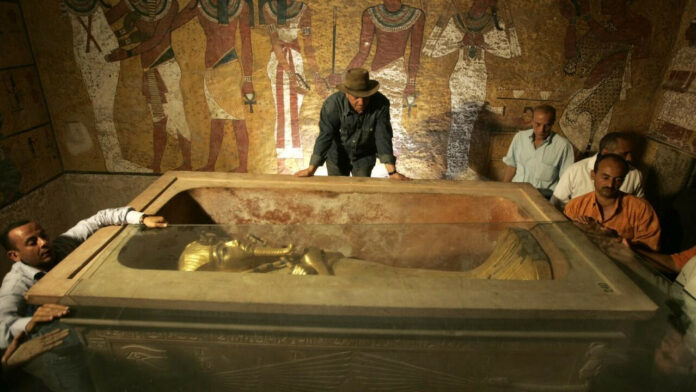For the first time since his burial over 3,300 years ago, the outermost coffin of King Tutankhamun has been removed from the boy king’s tomb in the Valley of the Kings. The intricately decorated coffin, made of wood and gold, is being painstakingly restored in preparation for the grand opening of the new Grand Egyptian Museum overlooking the Pyramids of Giza in late 2020.

Deterioration Necessitates Restoration
Although King Tut’s tomb was miraculously discovered largely intact by British archaeologist Howard Carter in 1922, nearly a century of tourists and exposure has taken its toll. Cracks, missing pieces, and concerning brown spots on wall paintings prompted a thorough restoration of the burial chamber, which was completed in February 2019 by the Getty Conservation Institute and Egypt’s Ministry of Antiquities.

Now, experts are turning their attention to the pharaoh’s three coffins. The innermost coffin is made of solid gold, while the middle coffin consists of gilded wood inlaid with multicolored glass. The outer coffin, however, remained in the tomb even as the others were transported to the Egyptian Museum in Cairo following Carter’s discovery. Only in July 2019, 97 years later, was this final coffin removed under tight security for fumigation and restoration.

Making History at the Grand Egyptian Museum

Antiquities Minister Khaled el-Enany estimates that restoring the outer coffin will take a minimum of eight months due to its fragile state and the extensive damage caused by the tomb’s heat and humidity over the millennia. However, once the coffin is stabilized and reunited with its counterparts as the centerpiece of the Grand Egyptian Museum, it will mark the first time in history that all three of King Tut’s coffins will be on display together.

The museum, set to be the world’s largest dedicated to a single civilization, will showcase all 5,000+ artifacts from King Tut’s tomb in over 75,000 square feet of exhibit space. With this unparalleled collection and the fully restored outer coffin of the famed boy king, visitors will gain an unprecedented glimpse into King Tut’s life, death, and journey to the afterlife, providing the most complete picture yet of this fascinating chapter in ancient Egyptian history.

